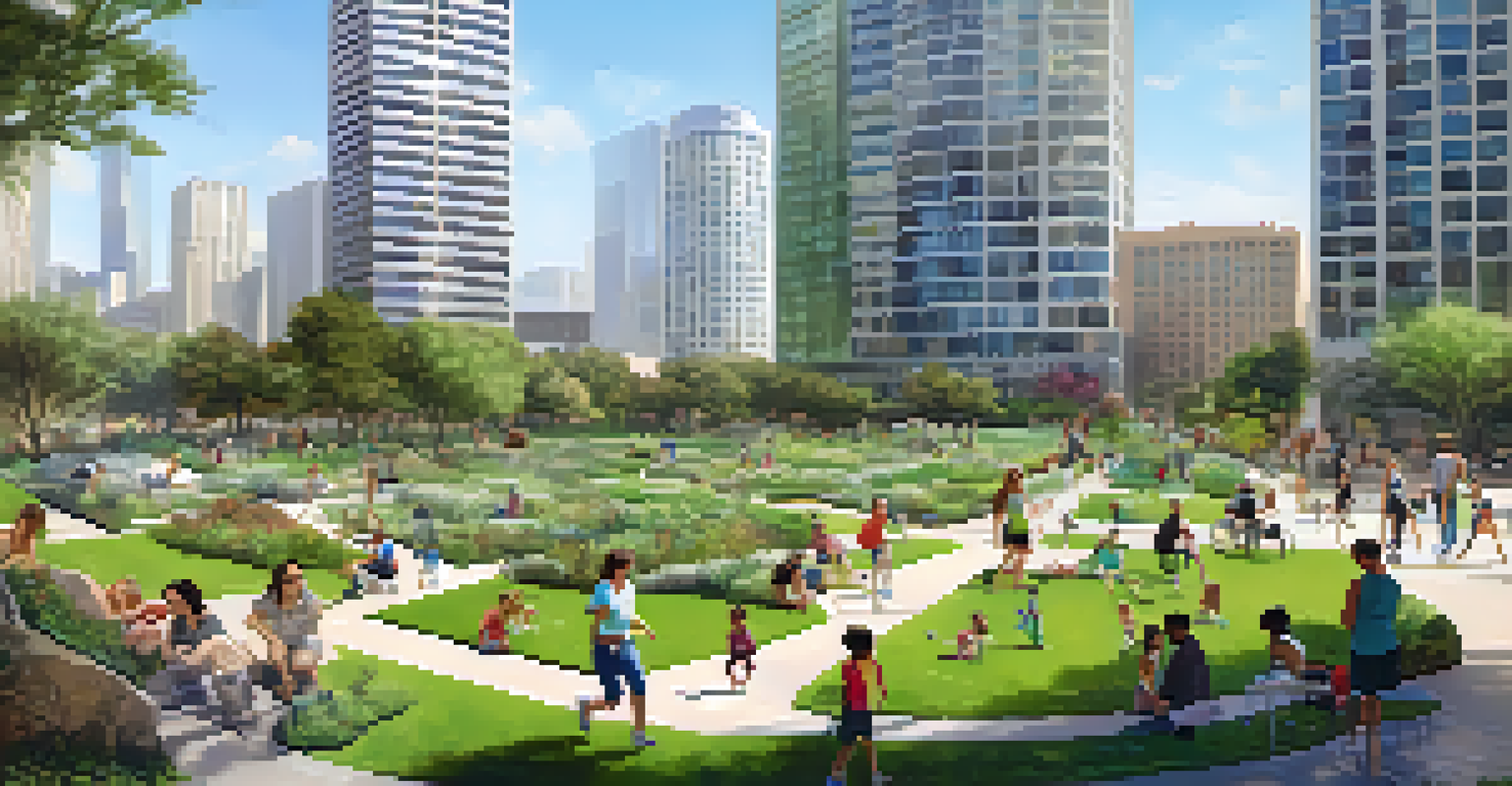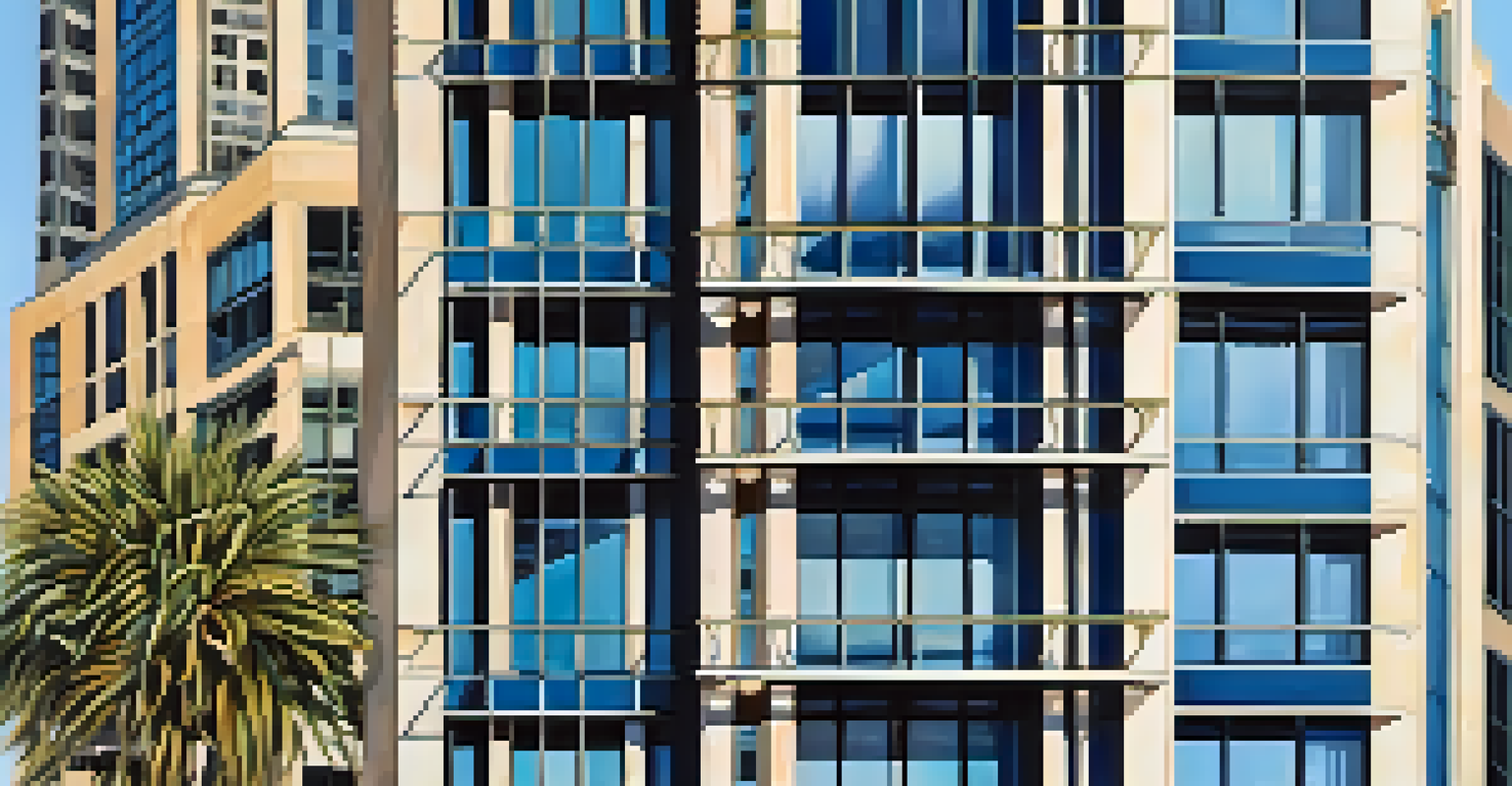Impact of High-Rise Developments on LA's Urban Landscape

Understanding High-Rise Developments in Los Angeles
High-rise developments have become a defining feature of urban life in Los Angeles. These towering structures not only alter the skyline but also impact the city's overall dynamics. They serve as homes, offices, and entertainment spaces, indicating a shift towards vertical living in a sprawling metropolis.
The city is not a problem, the city is an opportunity.
As LA continues to grow, high-rise buildings offer a solution to housing shortages and urban sprawl. They make efficient use of limited land while providing residents with amenities and accessibility to public transit. This trend reflects a broader movement towards sustainable urban development and smart city planning.
However, the rise of these structures also brings challenges, including architectural coherence and community integration. Balancing the need for growth with maintaining the character of neighborhoods is crucial as LA navigates its future.
The Aesthetic Shift: Changing the LA Skyline
The introduction of high-rise buildings dramatically changes the visual landscape of Los Angeles. Iconic structures like the Wilshire Grand Center and the U.S. Bank Tower stand as symbols of modernity and ambition. These buildings are not just functional; they are statements of architectural creativity and innovation.

While some appreciate the sleek lines and glass facades, others argue that high-rises disrupt the traditional low-rise charm of many neighborhoods. The contrast between old and new can create a jarring effect, leading to discussions about the preservation of historical sites. This tension illustrates the ongoing dialogue between progress and nostalgia.
High-Rises Shift Urban Dynamics
High-rise developments in Los Angeles address housing shortages while altering the city's skyline and community dynamics.
Ultimately, this aesthetic shift prompts a reevaluation of what Los Angeles represents. As the skyline evolves, so too does the identity of the city, reflecting both its history and its aspirations for the future.
High-Rises and Urban Density: A Double-Edged Sword
High-rise developments are often hailed for promoting urban density, which can lead to more vibrant communities. By clustering people and businesses together, these buildings can foster social interaction and economic activity. The idea is that a denser urban environment can lead to more sustainable living practices.
Architecture is the thoughtful making of space.
However, increased density can also strain existing infrastructure and resources. Public services like schools, parks, and transportation may struggle to keep pace with the growing population. This creates a need for careful planning and investment to ensure that all residents benefit from urban growth.
Finding the right balance between density and livability is crucial. As LA continues to evolve, city planners and developers must prioritize thoughtful design that enhances the quality of life for all Angelenos.
Environmental Considerations of High-Rise Developments
The environmental impact of high-rise buildings is a significant consideration in urban planning. On one hand, taller buildings can lead to reduced land use and lower urban sprawl, which can help preserve surrounding natural areas. On the other hand, their construction and operation can lead to increased energy consumption and carbon emissions.
To mitigate these effects, many modern high-rises are designed with sustainability in mind. Features like green roofs, energy-efficient systems, and sustainable materials are becoming standard. These eco-friendly designs can help reduce the overall environmental footprint of these towering structures.
Balancing Density and Livability
Increased urban density from high-rises can enhance vibrancy but requires careful planning to avoid straining infrastructure.
As Los Angeles embraces high-rise living, the focus on sustainability must remain a priority. Balancing growth with environmental stewardship is essential for preserving the city's natural beauty and ensuring a healthy future.
Community Impact: High-Rises and Local Residents
The rise of high-rise developments is not without controversy, particularly in how they affect local communities. Residents often voice concerns about gentrification, as new developments can lead to rising property values and displacement of long-time residents. This creates a complex dynamic between development and community stability.
Moreover, high-rises can change the social fabric of neighborhoods. New residents may bring fresh perspectives and economic opportunities, but they can also disrupt established communities. It's crucial for developers to engage with local stakeholders to ensure that new projects support existing residents rather than push them out.
Incorporating community feedback into the planning process can lead to more inclusive developments. Striking a balance between new construction and community needs is essential for fostering a sense of belonging in an evolving urban landscape.
Transportation Challenges with High-Rise Living
With the increase in high-rise developments, transportation becomes a critical issue in Los Angeles. A denser population in these buildings means more people relying on public transit, which can lead to overcrowding and strain on existing systems. The challenge lies in ensuring that transportation infrastructure can accommodate this growth.
Developers and city planners must collaborate to enhance public transit options and improve walkability in high-rise areas. This may include building new transit stations, expanding bus routes, and creating pedestrian-friendly spaces. The goal is to create a seamless connection between high-rise living and transportation networks.
Community Engagement is Essential
Developers must involve local residents in planning to mitigate gentrification and foster inclusive communities amidst new high-rises.
Addressing transportation challenges is key to the success of high-rise developments. A well-integrated transit system not only improves accessibility but also contributes to a more sustainable urban environment.
The Future of High-Rise Developments in LA
Looking ahead, the future of high-rise developments in Los Angeles is poised for continued growth and transformation. As the city grapples with issues like housing shortages and climate change, vertical living may offer viable solutions. The trend toward high-density urban environments is likely to shape LA's development landscape for years to come.
Emerging technologies and innovative design concepts could redefine what high-rise living looks like. Smart buildings equipped with advanced technology can enhance energy efficiency and improve resident experiences. This evolution will not only change the skyline but also the way people interact with their urban environment.

Embracing this future requires a commitment to thoughtful urban planning that prioritizes sustainability and community engagement. By doing so, Los Angeles can ensure that high-rise developments contribute positively to the urban landscape and the lives of its residents.